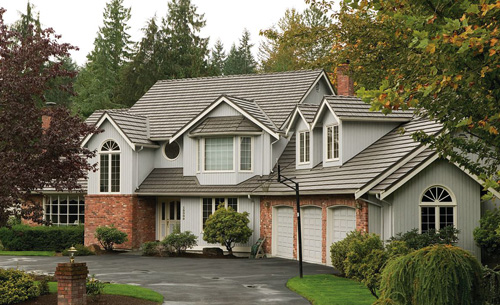


Metal shingles are roofing panels made from various types of metals, including aluminum, copper, and steel. They are designed to resemble traditional roofing materials, such as asphalt shingles, wood shakes, and slate tiles. Metal shingles are installed in overlapping rows and are attached to the roof deck with nails or screws.
One of the biggest advantages of metal shingles is their durability. They can withstand harsh weather conditions, including heavy rain, wind, and hail, without cracking, warping, or fading. Metal shingles are also resistant to fire and pests, making them a safe and long-lasting roofing option.
Metal shingles come in a variety of colors, styles, and finishes, which makes it easy to match them with any architectural style or design preference. They can be customized to resemble natural materials, such as wood or slate, or have a modern, sleek appearance.
Metal shingles are energy-efficient as they reflect the sun’s heat and prevent it from entering the attic, which can reduce cooling costs during the summer months. Additionally, many metal shingles are made from recycled materials and can be recycled at the end of their lifespan, making them an environmentally friendly choice.
Metal shingles are more expensive than traditional roofing materials, such as asphalt shingles or wood shakes. However, they have a longer lifespan and require less maintenance, which can offset the initial cost over time.
Metal shingles can be noisy during heavy rain or hailstorms, which can be a concern for homeowners who prioritize peace and quiet.
Metal shingles can last up to 50 years or more with proper maintenance.
Yes, metal shingles can be installed over an existing roof if the roof deck is in good condition and meets the installation requirements.
Metal shingles require minimal maintenance, such as cleaning debris and inspecting for any damage or loose fasteners.
Yes, metal shingles are more energy
No, standing seam roofing is not typically noisy during rain or hail storms. The raised seams on the panels provide a layer of sound insulation that can actually help to reduce noise levels inside the home.
